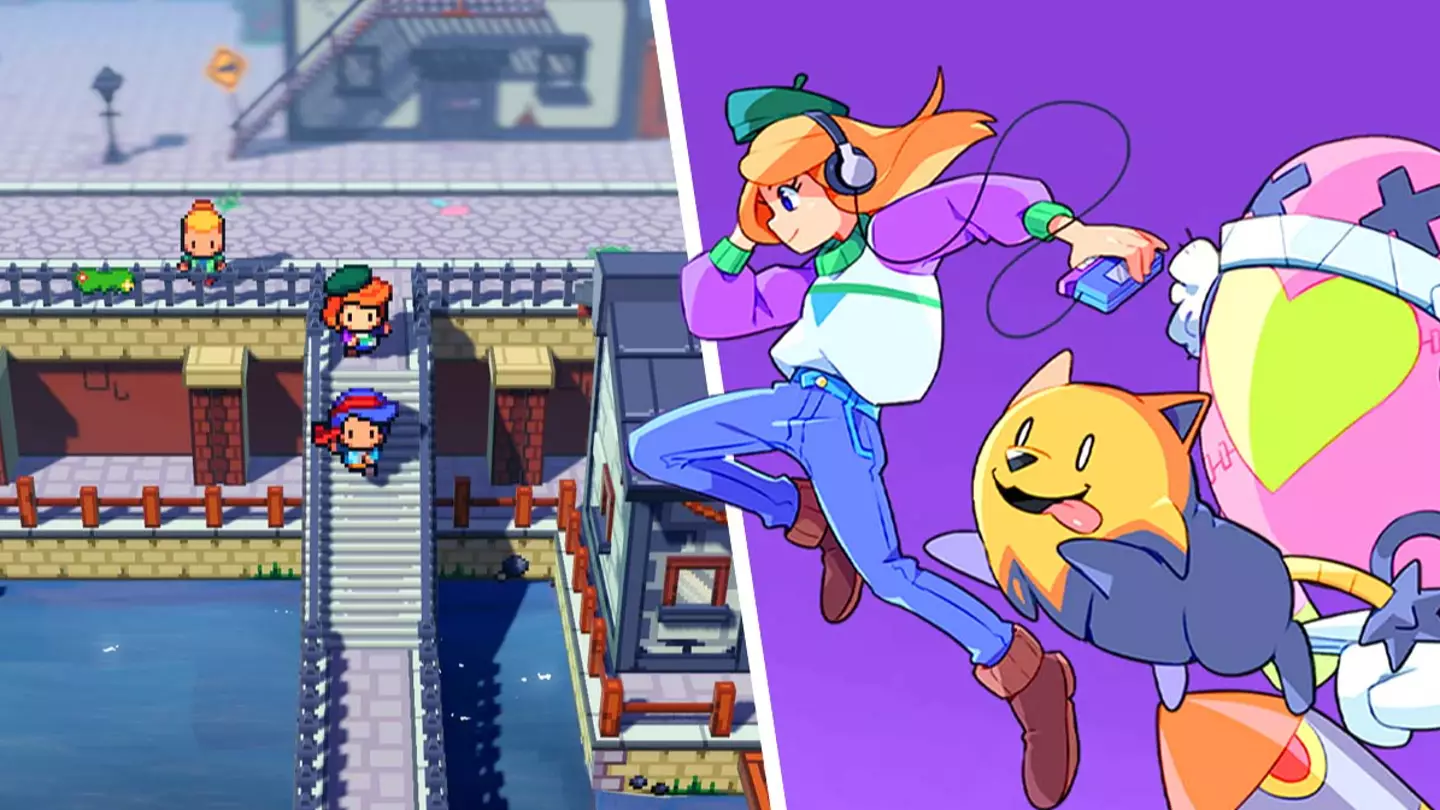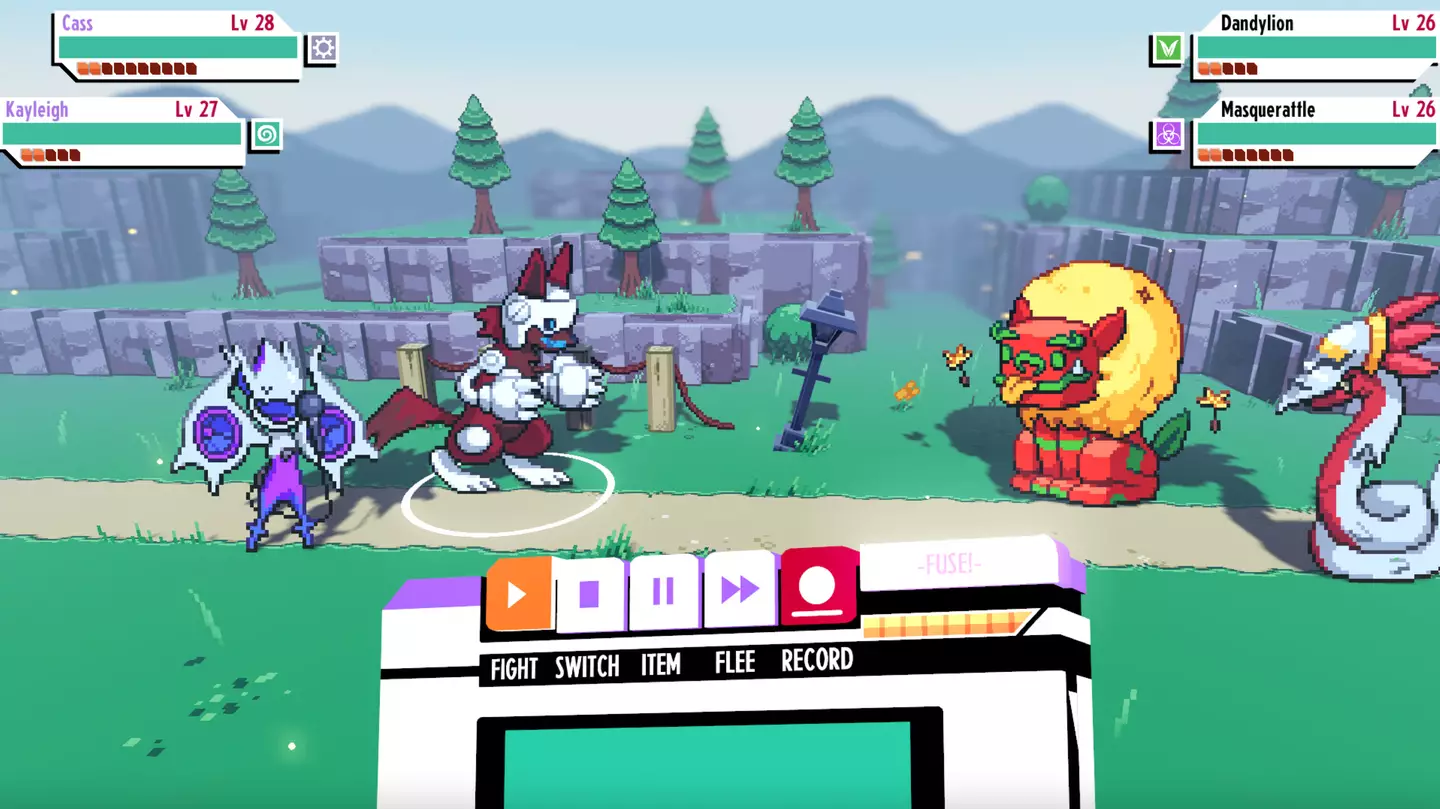
As someone who’s been obsessed with Pokémon since childhood, I’ve played a lot of monster-catching games over the years which weren’t produced by The Pokémon Company. Some of these were far better than others. Look, when you’re a bored kid who’s already played the existing Game Freak titles dozens of times over, you’re bound to go looking for whatever cheap clones you can find in an attempt to scratch that itch.
In an odd, nostalgic way, I still think fondly of the terrible monster-catching titles I discovered on the App Store in my early teens. They ran poorly, were full of bugs, featured some very questionable monster designs, and were often littered with those annoying energy timers that mobile games love to use in an attempt to make you spend your sweet, sweet money. Thankfully, there are some far better alternatives available these days, including Cassette Beasts, a game so full of inspiration and soul that it’d be rude to call it a Pokémon clone. With that said, its current performance on Nintendo Switch is disappointingly reminiscent of those poorly-optimised mobile messes of old.
Take a look at the trailer for Cassette Beasts below.
There’s no denying Cassette Beasts’ Pokémon-inspired roots, but it certainly takes a zanier, self-aware approach to the things that are similar. Your character wakes up on an otherworldly island called New Wirral, a place inhabited by monsters which can be ‘recorded’ using cassette tapes. Once recorded, you can then transform into them and use their powers to fight. How does it work? Don’t ask - no one knows. It just does. While this is a really neat setting, unfortunately for your character, there’s apparently no way to get back home.
Advert
After meeting the first of a few companion characters (who you can develop your bonds with and fight beside in battles throughout the game) you’ll have a run-in with your first Archangel. These are creepy, ultra-powerful bosses that seem almost too powerful to be considered monsters. Upon defeating it using the power of fusion (more on that later), it’s clear that hunting down other Archangels on the island may be the key to getting home. Alongside fighting ranger captains (definitely not gym leaders) and taking down a group of corrupt landlords (a hilarious take on Pokémon’s villainous teams), this is the main quest that’ll be guiding you throughout the game.
We definitely need to talk a little more about the monsters themselves, because there’s some genuinely brilliant ones. All in all, there are 120 critters to discover - from the adorable Pombomb (a Fire-type Pomeranian) to the spooky Mothmanic (an Electric-type moth), all the designs are truly unique, and none of them ‘feel like Pokémon’ (in the best way possible). When fighting with your companions, you’ll also build up a fusion bar, and once full, you can fuse any two of your monsters together into a huge merged fella. Since there’s a total of 14,000 fusions to discover, you’ll probably never see them all in a general playthrough, but it’s such a good way of inspiring the player to use different monsters in battle to see what combined forms they can take.
The more you fight with your recorded tapes, the more you’ll level up their ‘star ranking’. Once they reach five stars, it’s possible to ‘remaster’ (cough, evolve) many of them into permanent swanky, stronger forms. However, the main level-up system isn’t tied to your monsters at all. Instead, you and your companions will level up throughout the game, and the strength of the monsters you transform into will be based on that. As such, you can grab an early-area creature right near the end of the game, and aside from it probably not being remastered, it’ll be just as strong as any of your other monsters you’ve had with you for your entire journey. This mercifully removes a lot of the need to grind, which is a common stumbling block with games like this.

Monster typings are also handled differently than you might expect. As well as a few totally unique types (including Glass, Astral and Plastic), using certain moves on monsters of specific typings will provide status effects such as buffs, debuffs, and even transmutations, which make the affected monster’s type change. Landing an Earth attack on a Fire-type monster will ‘Extinguish’ them, reducing their attack power, while hitting an Ice-type with a Fire-type attack will apply a ‘Water Coating’, turning it into a Water-type for the battle. While many of these status effects, like Pokémon type advantages, just make sense when you consider real-world science, others feel more complex, and as a result, it’s quite difficult to remember all of the possible effects of your moves. These intricacies take some getting used to, but they make for a battle system which requires well thought-out tactics rather than simple move spamming, which is a delightfully engaging experience.
Advert
Pokémon-inspired elements aside, Cassette Beasts boasts a delightful pick-n-mix of features and vibes from a number of different games. The top-down 2D visuals combine beautifully with a utility-gated progression system - which hinges on players capturing certain monsters to unlock overworld abilities, such as gliding and breaking rocks - to create something very reminiscent of a 2D Zelda game. Meanwhile, the soundtrack is just as good as you’d hope for a game centred around cassette tapes - it features both instrumental and vocal versions of its many catchy tracks, all of which give off major The World Ends with You energy.
Unfortunately though, as I mentioned at the top of this whole article, the Nintendo Switch version of Cassette Beasts is currently in a bit of a state. The game frequently stutters (badly) just when you’re wandering around the world, and the moment you decide to step foot in the water, the lag becomes so overwhelming that the game is borderline unplayable. I’ve experienced multiple crashes all while doing totally different activities - from slowly wandering through the town to exiting the battle victory screen. Separate to those instances, I’ve also had to completely reload the game from the Switch home menu multiple times due to all of the environment’s textures randomly disappearing and turning into colourful static - while that oddly feels fitting with the game’s theme, it definitely wasn’t supposed to happen.
The performance is so shocking that I’d held off from playing the game properly and writing this feature in the hopes that things would eventually be fixed, because as the ratings on every other platform would suggest, it’s a genuinely fantastic game at its core. Publishers Raw Fury have announced that a new update will be landing on all platforms next week, which it promises should also iron out some of the Switch version’s problems, but it remains to be seen how effective this will be.
Until the point that all these issues are resolved, I can’t wholeheartedly recommend playing Cassette Beasts on Nintendo Switch, which is why I won’t be leaving a final review score here. However, that doesn’t mean that it isn’t worth playing on other platforms. Its unique ideas, charming aesthetic and engrossing battle system are a real treat, and experienced on a smoother platform, it might just be one of the best indies you’ll play all year.
Advert
Cassette Beasts is out now on PC, Xbox Series X/S, Xbox One and Nintendo Switch (version tested). Code for testing was provided by the publisher.
Featured Image Credit: Raw FuryTopics: Indie Games, Nintendo Switch, Pokemon, Xbox, Xbox Game Pass, PC